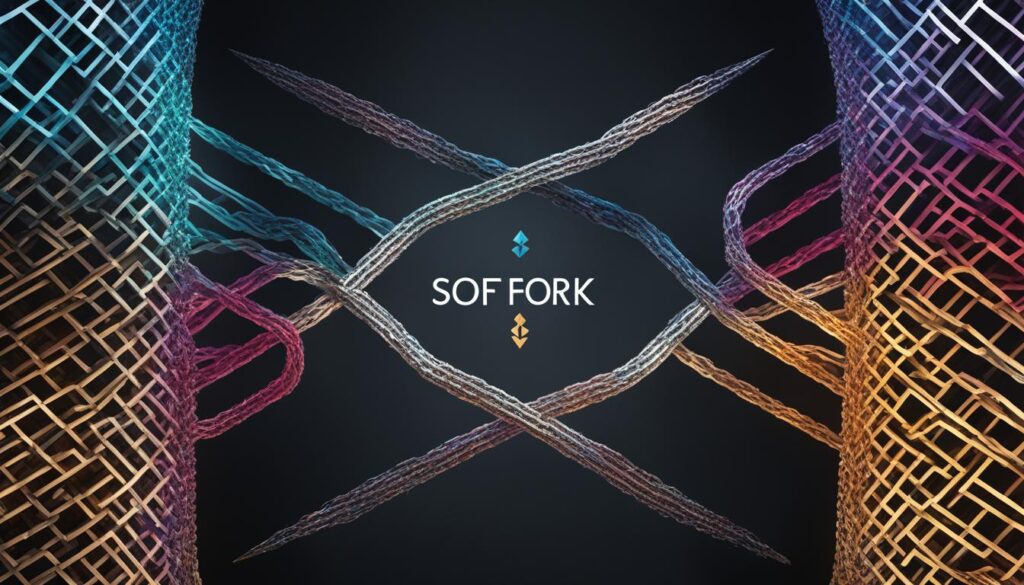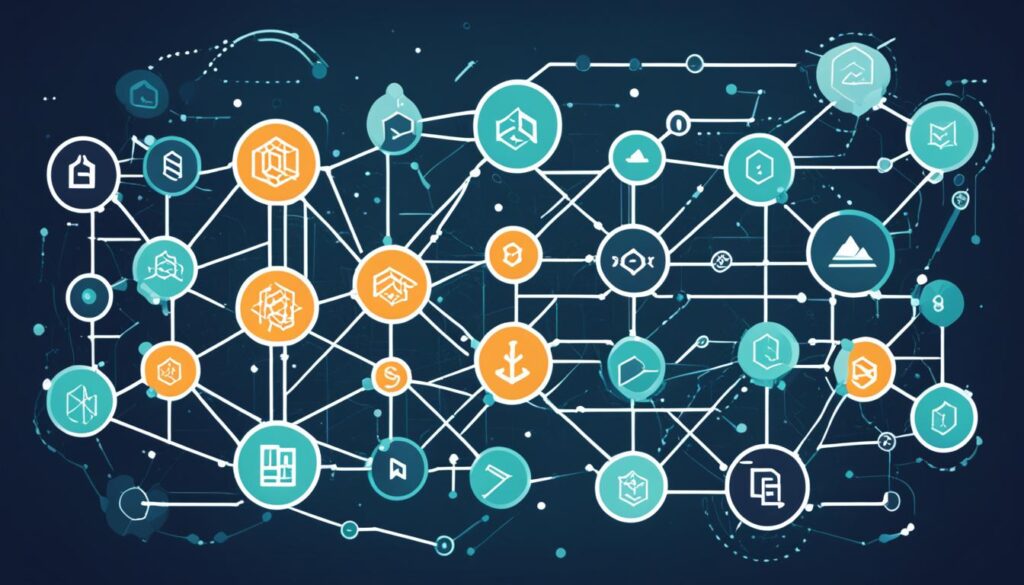In the world of blockchain networks, the evolution of cryptocurrencies is driven by various technological advancements. One of these advancements is the concept of soft forks.
A soft fork refers to a change in the software protocol of a blockchain network that renders previously valid transaction blocks invalid. Unlike a hard fork, a soft fork is designed to be backward-compatible, meaning that old nodes will still recognize the new blocks as valid.
This type of fork requires only a majority of miners upgrading to enforce the new rules, making it a more seamless and efficient process. Soft forks can be utilized to introduce new transaction types, such as pay-to-anybody transactions, or to address security vulnerabilities and optimize the overall performance of the blockchain network.
Soft forks have been successfully implemented on major blockchain networks like Bitcoin and Ethereum, enabling the introduction of new functionalities and features to enhance the user experience and expand the potential applications of cryptocurrencies.
Key Takeaways:
- Soft forks are a type of fork in blockchain technology that introduce backward-compatible changes to the software protocol.
- They require a majority of miners to upgrade and enforce the new rules.
- Soft forks can add new transaction types and enhance the overall security and efficiency of blockchain networks.
- Examples of soft forks include Segregated Witness (SegWit) on Bitcoin and the Ethereum 2.0 upgrade.
- Soft forks play a crucial role in the continuous evolution and improvement of cryptocurrencies.
Types of Forks: Hard Forks and Soft Forks
Blockchain technology introduces two primary types of forks that play a significant role in the evolution of blockchain networks: hard forks and soft forks. While they both involve changes to the blockchain protocol, they differ in their approach and impact on the network.
What are hard forks?
A hard fork is a type of fork that results in a split in the main blockchain network, creating a new cryptocurrency on the new blockchain. During a hard fork, the rules of the blockchain protocol are updated or changed, making the old blockchain and the new blockchain incompatible with each other. This creates two separate networks that run on different rules and may even have their own native tokens.
Examples of hard forks include Bitcoin Cash, which was the result of a hard fork from the original Bitcoin blockchain, and Ethereum Classic, which emerged from a hard fork in the Ethereum network. In a hard fork, all nodes in the network must upgrade to the new version of the software to participate in the new blockchain.
What are soft forks?
In contrast to hard forks, soft forks are a different approach to making changes to the blockchain protocol. A soft fork represents a forward-compatible change to the protocol, where the old blockchain continues to accept blocks from the newly updated blockchain, even though there is a change in the rules.
Soft forks are designed to be backward-compatible, which means that old nodes can still recognize the new blocks as valid. This compatibility allows for a smoother transition and avoids a complete split in the network. Soft forks do not generate a new cryptocurrency coin; instead, they maintain the integrity of the existing blockchain.
Examples of soft forks include Segregated Witness (SegWit) implemented in the Bitcoin network, which introduced a change in transaction format, and the upcoming Ethereum 2.0 upgrade, which aims to enhance scalability and security.
A soft fork requires a majority of miners to upgrade to the new rules to enforce the changes. However, not all nodes need to upgrade, as the old protocol still recognizes the blocks from the upgraded nodes.

Understanding the different types of forks in blockchain technology, whether they be a hard fork or a soft fork, provides insight into how these changes impact the blockchain ecosystem. Each type has its own implications for network participants, and the choice between them depends on the objectives and needs of the blockchain community.
The Benefits and Challenges of Forking
Forking in blockchain technology offers several benefits and challenges that shape the evolution of cryptocurrencies. By understanding these factors, the blockchain community can make informed decisions regarding the implementation of forks.
Benefits of Forking
One of the primary benefits of forking is the ability to implement security fixes, making blockchain networks more resilient to hacking and malicious attacks. These fixes ensure that the integrity and trust of the network are maintained, enhancing the overall security of the system.
Forks also enable efficiency changes, addressing critical issues such as scalability and transaction speed. Through the introduction of new protocols and algorithms, forks allow for the optimization of blockchain networks, resulting in faster and more efficient transactions.
Furthermore, forks facilitate the addition of new features to blockchains. This collaborative development approach encourages community participation and fosters innovation. By introducing new functionalities and capabilities, forks empower developers and users to create and explore new possibilities within the blockchain ecosystem.
Another noteworthy benefit of forking is the ability to reverse transactions and recover funds lost due to fake transactions or hacks. This capability ensures that the blockchain remains a trusted and reliable platform, providing reassurance to users and preserving the integrity of the network.
Challenges of Forking
While forking offers significant benefits, it also presents its fair share of challenges.
Soft forks, for example, can be exploited by bad actors to trick full-node users and miners into validating blocks that violate the rules of the blockchain. This manipulation can undermine the security and consensus mechanisms of the network, leading to potential vulnerabilities.
Hard forks, on the other hand, can divide communities and reduce network security and processing capacity. When a blockchain splits into two separate networks, it can result in fragmentation and decreased network effects. Additionally, hard forks may require significant resources, including computing power and infrastructure upgrades, which can pose financial and logistical challenges for the community.
Ultimately, both types of forks require careful consideration and engagement from the blockchain community. The benefits and challenges must be weighed to ensure that the chosen fork aligns with the goals and objectives of the network.

| Benefits | Challenges |
|---|---|
| Implementation of security fixes | Potential exploitation in soft forks |
| Efficiency changes addressing scalability and transaction speed | Division of communities in hard forks |
| Addition of new features to blockchains | Reduction of network security and processing capacity in hard forks |
| Ability to reverse transactions and recover funds | Resource and logistical challenges in hard forks |
Conclusion
Forks play a significant role in the evolution of blockchains. They enable updates and upgrades to the blockchain software protocol, allowing for increased efficiency and the implementation of new features. With hard forks, separate blockchain networks are created, while soft forks maintain compatibility with the old blockchain.
Both types of forks have their benefits and challenges. Hard forks provide an opportunity for innovation and the creation of new cryptocurrencies, but they can also divide communities and reduce network security and processing capacity. On the other hand, soft forks offer a more streamlined approach, ensuring that old nodes still recognize the new blocks as valid.
The choice between hard forks and soft forks depends on the specific needs and objectives of the blockchain community. It requires careful consideration and engagement from all stakeholders involved. As blockchains continue to evolve, forks will continue to be a key mechanism for driving innovation and sustainability in the world of cryptocurrencies.
Forks have proven to be an essential tool for making necessary updates and improvements to blockchains. They allow for the introduction of security fixes, efficiency changes, and the implementation of new features. These forks empower the blockchain community to adapt and overcome challenges, ensuring that blockchains remain secure, scalable, and capable of meeting the demands of modern technology. As the world of cryptocurrencies continues to advance, forks will remain a vital catalyst for progress and development.
FAQ
What are Soft Forks?
Soft forks in blockchain technology refer to changes in the software protocol that make previously valid transaction blocks invalid. Unlike hard forks, soft forks are backwards-compatible, meaning that old nodes will recognize the new blocks as valid. Soft forks can be used to add new transaction types and occur when miners using non-upgraded nodes violate new consensus rules. They do not require all nodes to upgrade and have been used on blockchains like Bitcoin and Ethereum to implement new functionalities.
What are the types of forks in blockchain technology?
Forks in blockchain technology can be categorized into two types: hard forks and soft forks. A hard fork results in a split in the main blockchain network, creating a new cryptocurrency on the new blockchain. The rules of the blockchain protocol are updated or changed, making the old blockchain and the new blockchain incompatible. On the other hand, a soft fork is a forward-compatible change to the blockchain protocol. The old blockchain continues to accept blocks from the newly updated blockchain, even though there is a change in the rules. Examples of hard forks include Bitcoin Cash and Ethereum Classic, while examples of soft forks include Segregated Witness (SegWit) in Bitcoin and the Ethereum 2.0 upgrade.
What are the benefits of forking in blockchain technology?
Forking in blockchain technology offers several benefits. It allows for the implementation of security fixes, making blockchains more resilient to hacking and malicious attacks. Forks also enable efficiency changes, addressing issues such as scalability and transaction speed. New features can be added to blockchains through forks, facilitating collaboration and community-driven development. Moreover, forks can be used to reverse transactions and recover funds lost from fake transactions or hacks, ensuring the integrity of the network.
What are the challenges of forking in blockchain technology?
Forks, both hard and soft, present challenges in blockchain technology. Soft forks can be exploited by bad actors to trick full-node users and miners into validating blocks that violate the rules of the blockchain. Hard forks can divide communities and reduce network security and processing capacity. Both types require careful consideration and engagement from the blockchain community to ensure successful implementation and address potential challenges.










